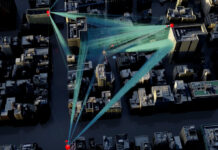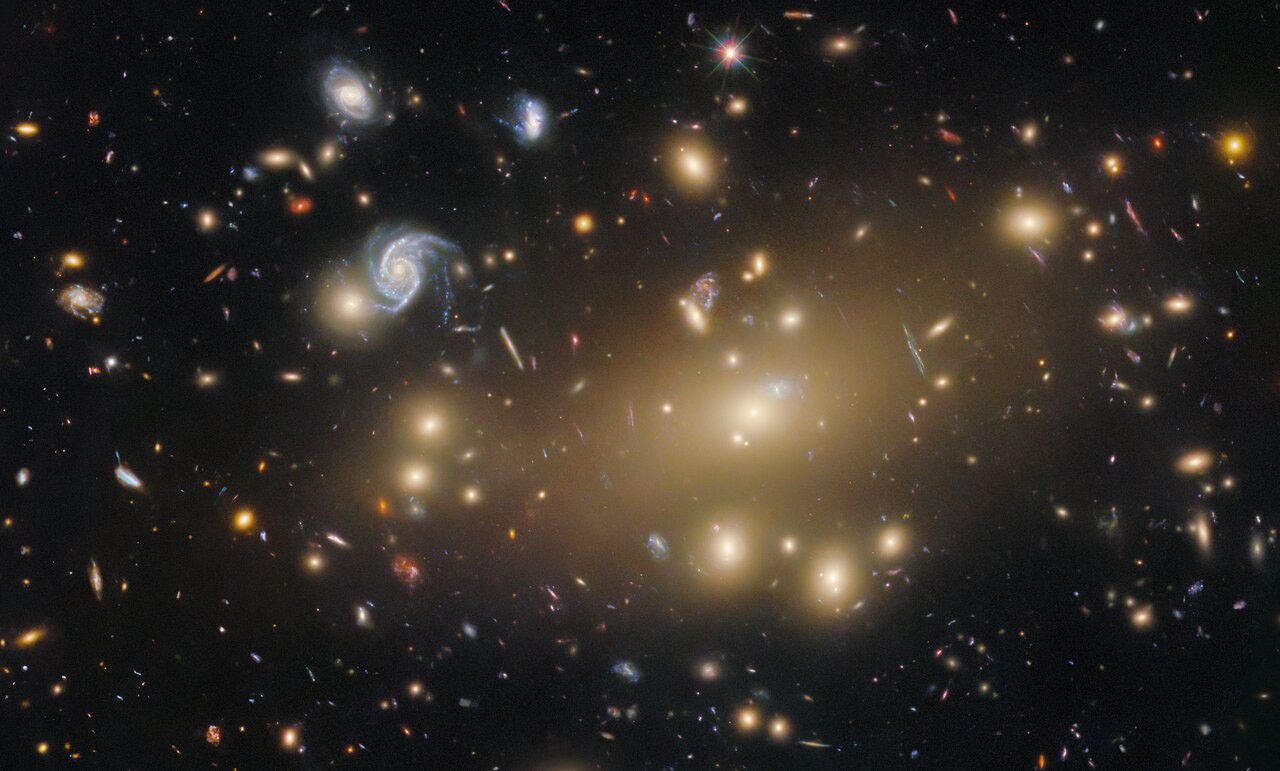Unveiling the Mysteries of Abell 209: Insights from the Hubble Space Telescope
In a remarkable display of cosmic grandeur, the Hubble Space Telescope, a joint project by NASA and the European Space Agency (ESA), has captured a stunning image of the galaxy cluster known as Abell 209. Located a staggering 2.8 billion light-years away within the constellation Cetus, aptly nicknamed "the Whale," this cluster presents a fascinating subject for scientific exploration and provides key insights into the workings of our universe.
Abell 209 is not just an ordinary cluster; it is a massive assembly of over a hundred galaxies. However, the true essence of this cluster extends beyond what is visible, even to Hubble’s highly sensitive instruments. The galaxies within this cluster are separated by vast stretches of space, each millions of light-years apart. This seemingly empty space is actually filled with hot, diffuse gas, which can only be observed through X-ray wavelengths. But perhaps the most intriguing component of this cosmic assembly is the elusive presence of dark matter.
Dark matter, a form of matter that neither emits nor reflects light, remains invisible to conventional telescopes. It does not interact with electromagnetic forces, making it undetectable by direct observation. Yet, its existence is inferred through its gravitational effects on visible matter. Astronomers estimate that dark matter constitutes approximately 25% of the universe, with normal matter accounting for a mere 5%, and the mysterious dark energy making up the remaining 70%.
The Hubble Space Telescope plays a crucial role in unraveling the mysteries surrounding dark matter and dark energy. By capturing detailed images like that of Abell 209, Hubble helps astronomers address fundamental questions about the cosmos. One of the key phenomena observed in galaxy clusters is gravitational lensing, a process where the immense mass of a cluster bends the fabric of spacetime. This bending effect can warp and magnify the images of background galaxies and stars.
While the image of Abell 209 lacks the dramatic rings that are sometimes associated with gravitational lensing, it nevertheless exhibits subtle signs of this effect. Within the golden glow of the cluster, streaky and slightly curved galaxies hint at the lensing at play. By analyzing the distortion of these galaxies, astronomers can map the distribution of mass within the cluster, providing critical insights into the underlying cloud of dark matter.
Understanding the distribution of dark matter is vital for testing theories on the evolution of the universe. Hubble’s high-resolution capabilities and sensitive instruments are instrumental in this endeavor, enabling scientists to refine our understanding of cosmic structures and the forces shaping them.
In addition to the scientific significance, the study of galaxy clusters like Abell 209 offers a glimpse into the scale and complexity of the universe. It challenges our perception of space and time, highlighting the vastness and intricacy of the cosmos. Such observations not only deepen our knowledge of the universe’s history but also inspire curiosity and wonder about the forces that govern it.
The Role of Hubble in Cosmic Discoveries
The Hubble Space Telescope, launched in 1990, has been a cornerstone of astronomical research and discovery. Orbiting above Earth’s atmosphere, it provides an unobstructed view of the universe, capturing images with unprecedented clarity. Hubble’s contributions to our understanding of the cosmos are vast, from determining the rate of expansion of the universe to capturing detailed images of distant galaxies and nebulae.
Hubble’s observations have been pivotal in validating the existence of dark matter. By studying gravitational lensing in galaxy clusters, astronomers have been able to map the distribution of dark matter, revealing its influence on visible structures. The telescope’s findings have also contributed to the discovery of dark energy, a mysterious force driving the accelerated expansion of the universe.
The telescope’s success is a testament to the collaboration between NASA and ESA, demonstrating the power of international cooperation in advancing scientific knowledge. As Hubble continues to observe the universe, it promises to unveil more secrets of the cosmos, pushing the boundaries of our understanding.
The Cosmic Ballet of Abell 209
Galaxy clusters like Abell 209 are not static entities; they are dynamic systems, undergoing constant evolution. The gravitational interactions within these clusters lead to complex motions and mergers, influencing the formation and structure of galaxies. Studying these interactions provides valuable insights into the processes that shape the universe.
The hot gas observed in Abell 209, visible only through X-ray wavelengths, is a key component of these interactions. This gas emits X-rays due to its high temperature, providing clues about the cluster’s mass and dynamics. The presence of such gas also indicates the cluster’s age and evolutionary stage, as it is the result of numerous galactic collisions and mergers over billions of years.
Reflections and Future Prospects
The image of Abell 209 captured by Hubble is a reminder of the immense scale and complexity of the universe. It challenges us to ponder the forces shaping the cosmos and our place within it. As technology advances, future telescopes and missions will continue to build upon Hubble’s legacy, providing even deeper insights into the universe’s mysteries.
In the coming years, the James Webb Space Telescope (JWST), set to launch soon, will complement Hubble’s observations, offering new perspectives on galaxy clusters and the early universe. With its advanced capabilities, JWST promises to unveil the formation of stars and galaxies, shedding light on the cosmic dawn.
As we continue to explore the universe, the study of galaxy clusters like Abell 209 will remain at the forefront of astronomical research. These cosmic assemblies serve as laboratories for understanding the fundamental forces and processes that govern the universe, offering a window into the past and future of cosmic evolution.
In conclusion, the Hubble Space Telescope’s image of Abell 209 is not just a snapshot of a distant galaxy cluster; it is a testament to the power of human curiosity and ingenuity. It invites us to explore the unknown and seek answers to the profound questions about the universe and our place within it. As we gaze at the stars, we are reminded of the vastness of the cosmos and the endless possibilities that await discovery.
For more Information, Refer to this article.

































